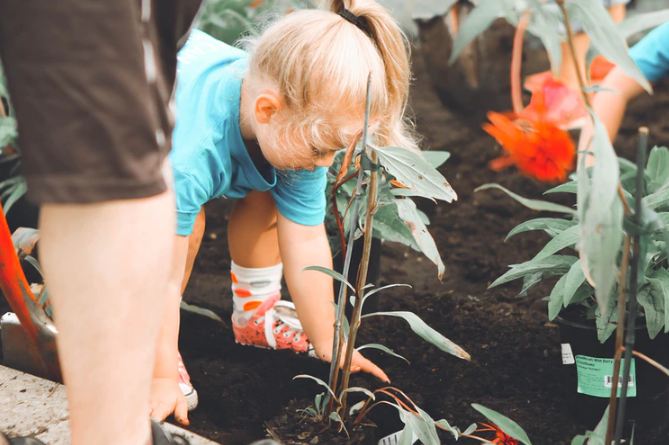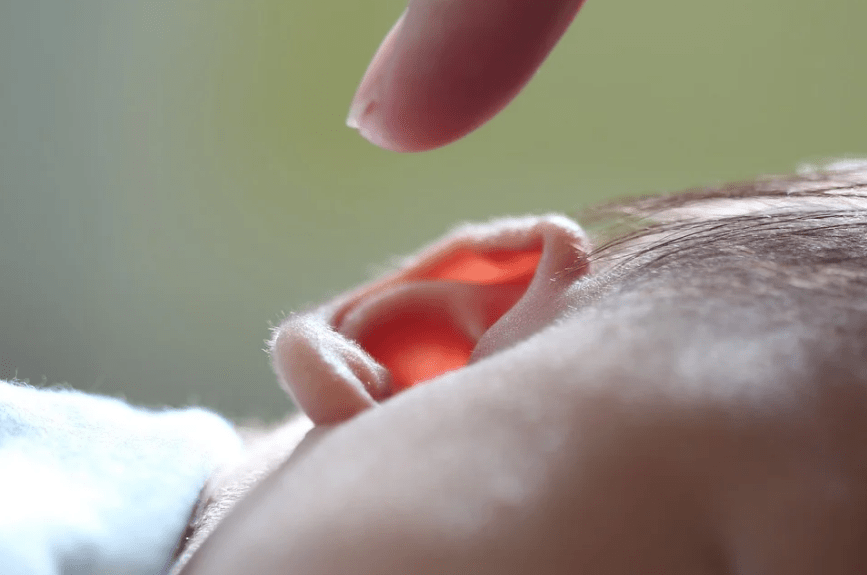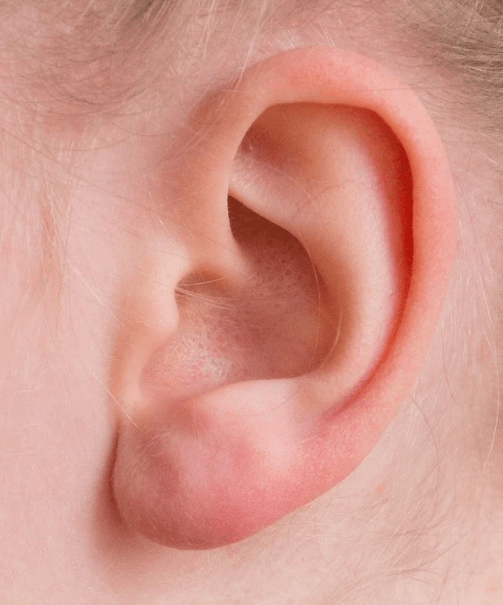Top Activities to Help Kids Learn Responsibility Through Pet Care

Introducing kids to pet care provides numerous opportunities for them to learn responsibility. Daily feeding routines teach the value of consistency, ensuring the pet's well-being. Grooming tasks like brushing fur or cleaning cages emphasize cleanliness and attention to detail. Walking and exercising pets foster physical activity and a sense of commitment. Additionally, training and veterinary visits further reinforce responsibility and care for another living being.
Daily Feeding Routines
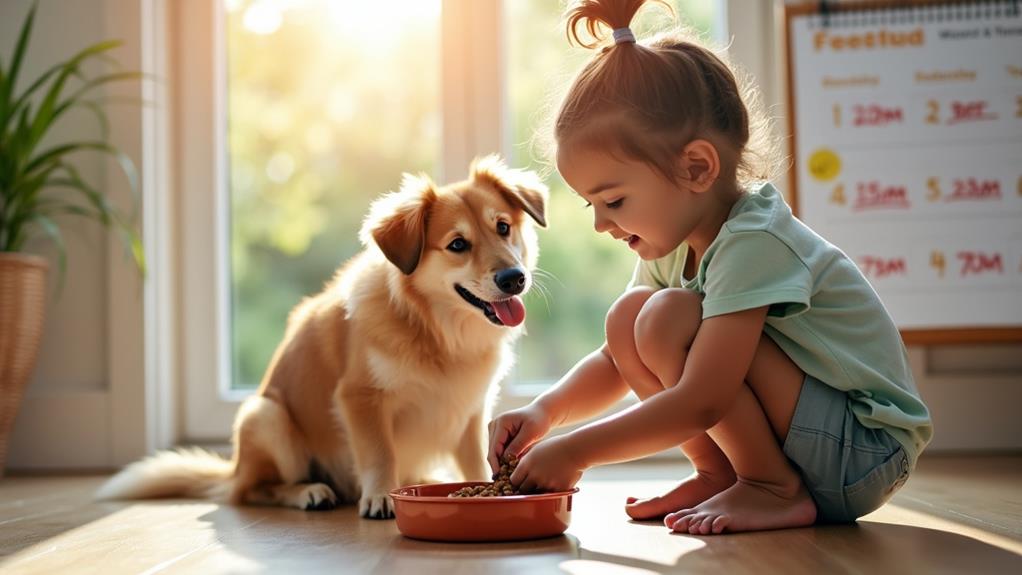
Establishing a daily feeding routine for pets helps children learn the importance of consistency and responsibility, as pets rely on them for nutrition. Assigning age-appropriate feeding tasks, such as measuring food and filling bowls, can enhance their sense of accountability while ensuring the pet's nutritional needs are met.
A specific feeding schedule teaches children to prioritize tasks and plan their day around this responsibility. This routine benefits both the pet and the child, instilling discipline and time management skills.
Involving children in selecting pet food can deepen their understanding of nutrition. Explain why certain foods are healthier for the pet, and let them participate in decision-making, fostering a stronger commitment to the pet's well-being.
Using a visual chart to mark completed feeding tasks provides a sense of accomplishment. Each checkmark reinforces the importance of daily care and encourages children to take their responsibilities seriously, building lifelong skills in responsibility and accountability.
Grooming and Hygiene
While feeding routines are a cornerstone of pet care, grooming and hygiene are equally crucial for a pet's overall health and comfort. Regular grooming sessions teach children the importance of maintaining a pet's hygiene, showing them that clean pets are healthier and more comfortable. By involving kids in brushing a dog's coat, they improve their motor skills and coordination while also fostering a bond with their pet.
Teaching children to check for mats in fur and clean ears or eyes instills a sense of responsibility and awareness of a pet's specific care needs. Bathing pets provides an opportunity for kids to learn about appropriate cleaning products and techniques, emphasizing the significance of using pet-safe products.
Establishing a grooming routine helps children develop a sense of commitment and reliability. They'll see the positive effects of their efforts on their pet's well-being, reinforcing the value of their role in pet care.
| Activity | Skill Developed |
|---|---|
| Brushing Coat | Motor skills, coordination, bonding |
| Checking for Mats | Responsibility, awareness |
| Cleaning Ears | Detail-oriented care |
| Bathing Pets | Knowledge of pet-safe products |
Walking and Exercise
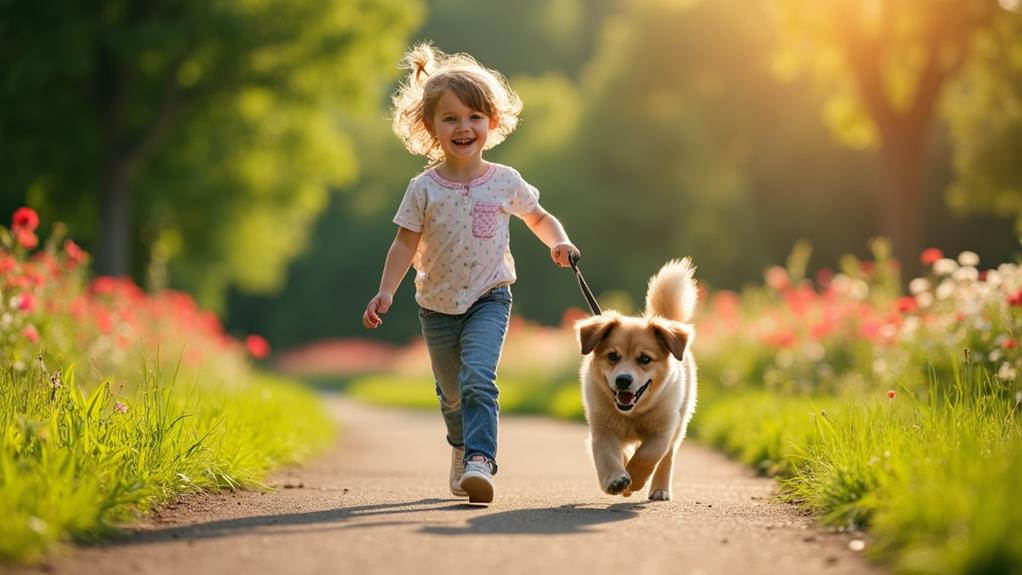
Walking your dog daily not only meets their exercise needs but also teaches your child the importance of commitment and routine. Handling the leash helps them develop skills to ensure both their safety and the dog's during outdoor activities. Regular walks and play promote a healthy lifestyle for your child and strengthen the bond between them and their pet.
Daily Exercise Benefits
Taking your pet for a daily walk offers more than just fresh air—it provides essential cardiovascular exercise that helps address rising childhood obesity rates. When children walk their pets, they're engaging in valuable physical activity that enhances their health. This routine encourages kids to step away from screens and get moving, making exercise a natural part of their day.
Playing games like fetch or frisbee with pets isn't just fun; it's an excellent way for children to get extra exercise. These activities stimulate pets and encourage children to actively participate, promoting heart-healthy habits and reducing sedentary time.
Studies indicate that children who regularly walk their dogs typically get at least 30 minutes of exercise daily. This consistent physical activity leads to improved general health and fitness levels. Plus, taking responsibility for a pet's exercise needs helps children understand the importance of their own health and fitness.
Establishing a routine of daily exercise with pets can create long-term habits for children, ensuring they stay active and healthy as they grow. By prioritizing their pet's needs, kids learn to prioritize their own well-being, fostering a sense of responsibility that benefits both their physical and mental health.
Leash Handling Skills
Mastering leash handling skills is essential for both you and your child when walking your dog. It enhances control over the dog, ensuring safety and comfort for everyone involved. Teaching your child techniques like using a loose leash prevents pulling and promotes good behavior in your pet, making walks more enjoyable. This practice not only aids in pet care but also fosters a strong sense of responsibility in your child.
Supervised leash walking is an excellent way for children to build confidence in managing their pet. It reinforces their role in pet care, illustrating the importance of regular exercise for the dog's well-being. Additionally, these walks encourage physical activity, contributing to a healthier lifestyle for both your child and your dog.
Using commands such as "heel" while walking on a leash teaches children effective communication with their pet. This improves their understanding of animal behavior and needs, making them more proficient in pet care. By employing positive reinforcement, your child learns the value of patience and consistency, which are fundamental elements in training and caring for a pet. Through these activities, children become responsible and empathetic pet owners.
Training and Commands
Teaching children how to train pets with basic commands like "sit," "stay," and "come" fosters a sense of responsibility and enhances their ability to communicate effectively with their furry friends. Consistent training sessions help kids reinforce obedience, establishing routine practices and a strong commitment to their pet's well-being.
When children take the lead in training, they develop leadership skills, promote accountability, and boost their confidence as they witness positive outcomes. Using enjoyable methods like clicker training, kids learn patience and consistency while forming a rewarding bond with their pets. This process teaches children the importance of perseverance and adaptability, as they may need to adjust their techniques to achieve the desired results.
Training pets with commands also deepens children's understanding of care and responsibility. As they observe their pets responding positively, they recognize the impact of their efforts. This hands-on approach nurtures growth in leadership and responsibility, creating a supportive environment for both child and pet. Through these activities, children not only train their pets but also develop essential life skills.
Veterinary Visits
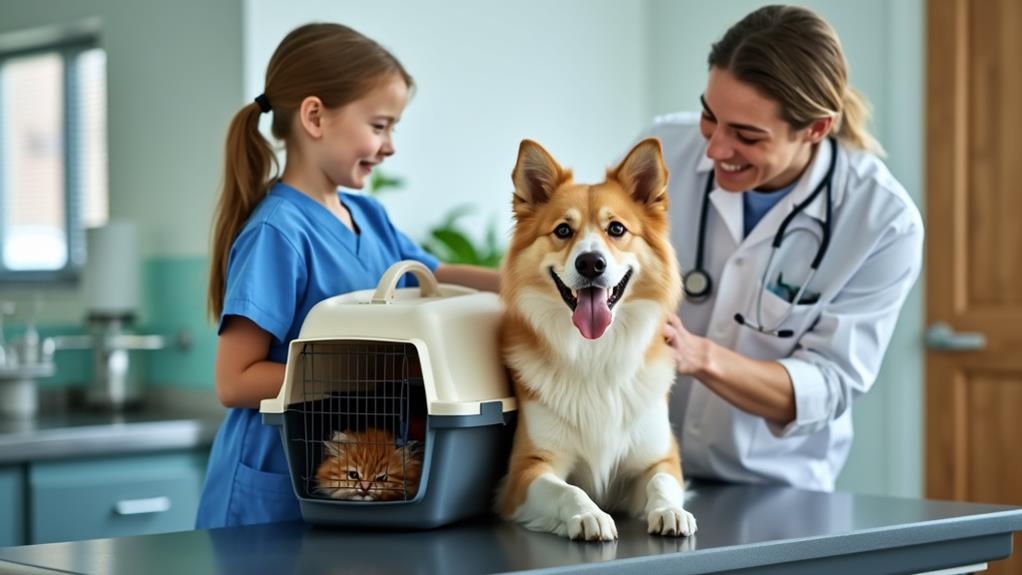
Veterinary visits provide invaluable lessons in pet care, highlighting the importance of regular health check-ups. Involving children in these appointments teaches them that regular check-ups can prevent illnesses and ensure a long, healthy life for pets. Children can prepare by listing questions about their pet's health, an activity that fosters communication skills and instills responsibility.
During the visit, children observe the importance of vaccinations and preventative care, such as flea and tick treatments, understanding that maintaining pet wellness is an ongoing effort. By helping to handle and calm the pet during the examination, kids learn to build trust and empathy, making the experience less stressful for both the animal and themselves.
After the visit, discussing what was learned reinforces the responsibility of caring for a pet's health. Topics like weight management and diet are essential, and these post-visit discussions can solidify those lessons. Ultimately, involving children in veterinary visits teaches them how to care for others and underscores the importance of regular health check-ups for their furry friends.
Cleaning Duties
Cleaning duties play a crucial role in teaching children responsibility through pet care. Assigning tasks such as maintaining the pet area cleanliness and organizing grooming supplies helps them grasp the importance of hygiene. Establishing a routine chore rotation ensures they learn commitment and gain a sense of accomplishment.
Pet Area Cleanliness
When children take responsibility for maintaining their pet's living area, they learn valuable lessons about hygiene and its impact on their pet's health. Pets teach kids how to care for another living being, and assigning appropriate cleaning tasks can foster a strong sense of duty. Tasks such as wiping down food bowls or sweeping up pet hair contribute to the pet's health and happiness while instilling a sense of accomplishment in your child.
Regularly engaging in these cleaning duties helps children understand the importance of a clean environment. Discussing the potential health issues that can arise from neglecting these tasks emphasizes their significance. This awareness teaches them the value of consistency and commitment. A clean living space directly impacts your pet's well-being and can prevent various health problems.
To make the process more engaging, encourage your kids to track their cleaning chores using a visual chart. This method helps them develop organizational skills and take pride in their responsibilities. By integrating these cleaning routines into their daily lives, children contribute to their pet's well-being and develop essential life skills.
Grooming Supplies Organization
Organizing grooming supplies like brushes, shampoos, and nail clippers helps kids understand the importance of maintaining their pet's hygiene and well-being. When children are assigned specific grooming tasks, such as brushing the pet's coat or cleaning their ears, they learn responsibility and become accountable for their pet's appearance and health.
Create a designated storage area for grooming supplies to encourage your child to keep their pet's items organized. This habit of tidiness not only benefits pet care but can also extend to other areas of their life. Involving your child in regular grooming schedules helps them grasp the commitment required in pet care. They'll learn to anticipate and prepare for grooming tasks on a weekly or monthly basis, reinforcing the importance of consistent care.
Using a checklist for grooming supplies and tasks can be highly effective. It allows children to track their responsibilities and accomplishments, providing a sense of achievement. This structured approach to pet care instills lifelong skills of accountability and commitment. By making grooming supplies organization a regular activity, your child will develop a deeper understanding of what it takes to care for a pet responsibly.
Routine Chore Rotation
Implementing a routine chore rotation for pet care duties can significantly enhance a child's understanding of shared responsibility. Assigning specific tasks like tidying up pet areas or washing food dishes teaches the importance of teamwork and accountability. This method instills a sense of ownership and pride in their contributions.
A weekly cleaning schedule ensures consistency, highlighting the value of maintaining a clean environment for pets' health and well-being. It's not just about hygiene; it's about reinforcing that pets depend on humans for a safe and healthy living space. Participating in a chore rotation helps children learn vital life skills, including cleanliness and organization.
Visual aids, such as chore charts, can make the process engaging and help kids track their responsibilities. These tools support the development of organizational skills as children manage their pet care duties. By making cleaning duties a regular part of the routine, you teach your children valuable lessons in responsibility, teamwork, and the importance of a clean environment, ultimately helping them become more conscientious and reliable caregivers.
Playing and Bonding
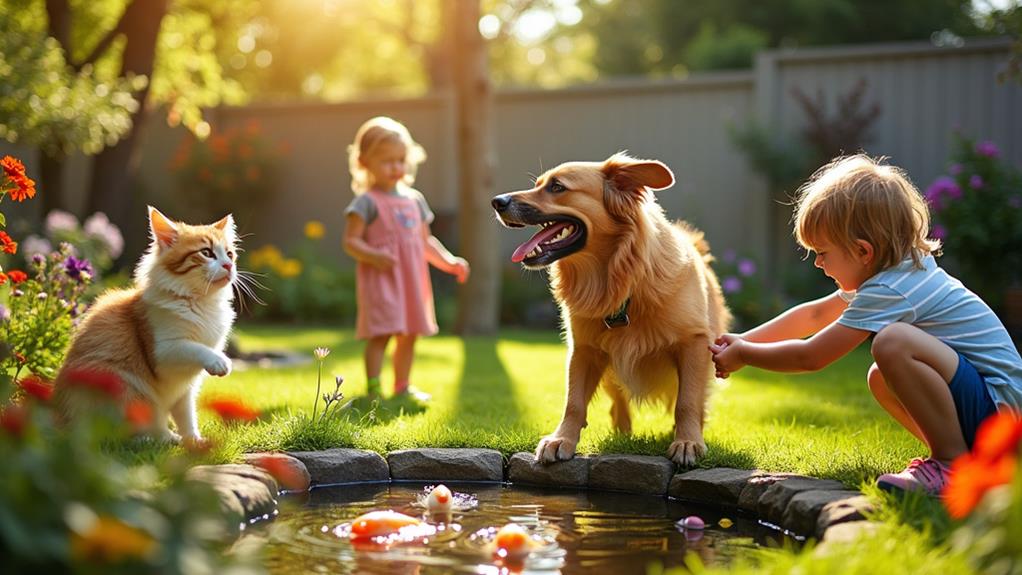
Engaging in interactive playtime with your pet, like fetch or tug-of-war, is not only enjoyable but also essential for building a strong bond and teaching children about the importance of regular exercise for their pet's health. Such activities foster a sense of companionship and responsibility in children, emphasizing the importance of mental stimulation and overall well-being for pets.
Involving kids in pet grooming, whether brushing or bathing, reinforces the bond between them and their pet while nurturing a sense of responsibility for maintaining cleanliness and hygiene. Organizing playdates or socializing sessions with other pets teaches children the value of companionship and its role in supporting a pet's emotional health. Additionally, creating a shared scrapbook of pet activities, filled with photos and memories, promotes a sense of ownership and encourages children to reflect on their pet care experiences.

